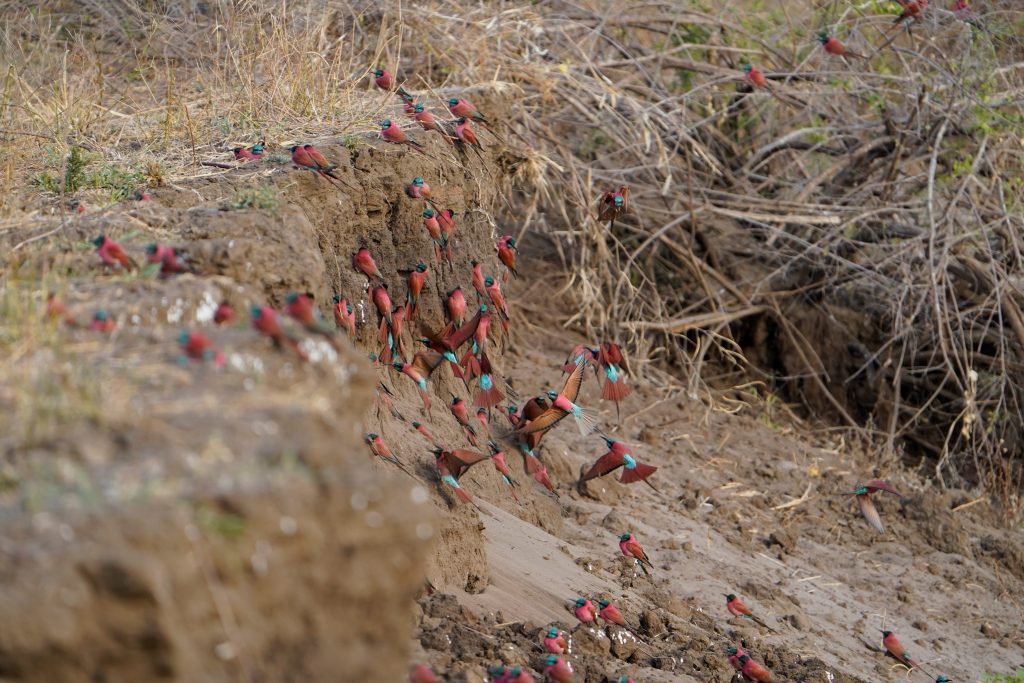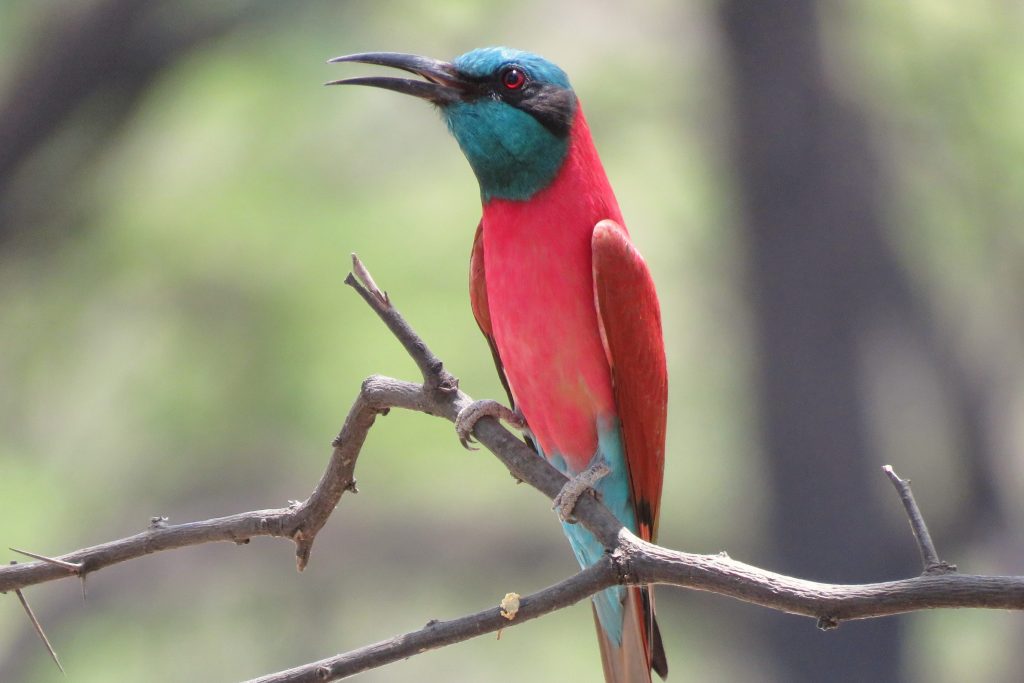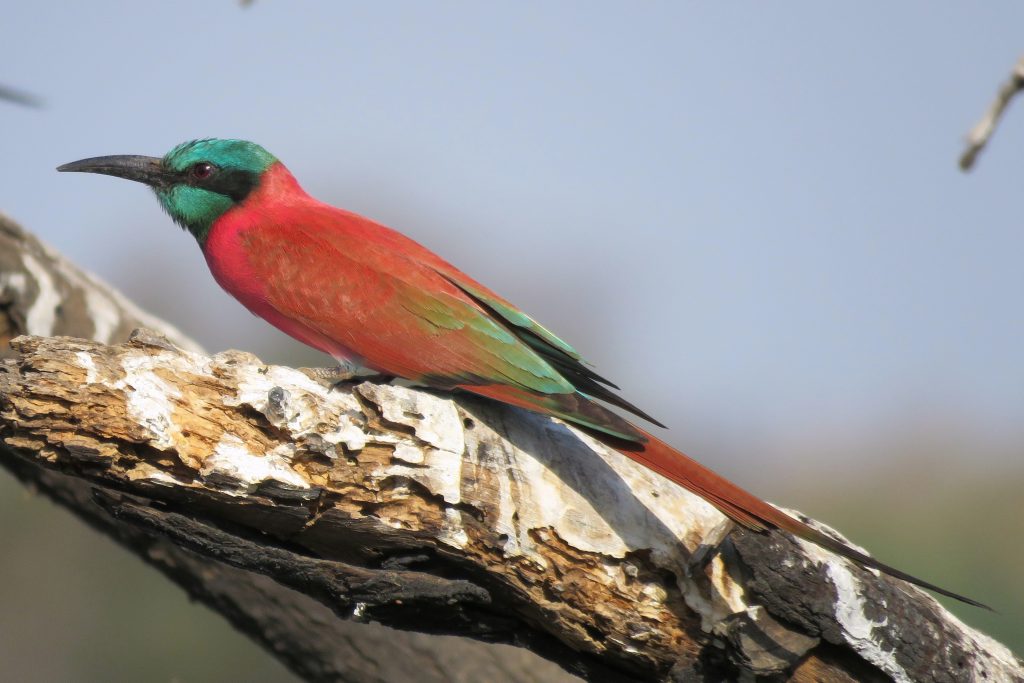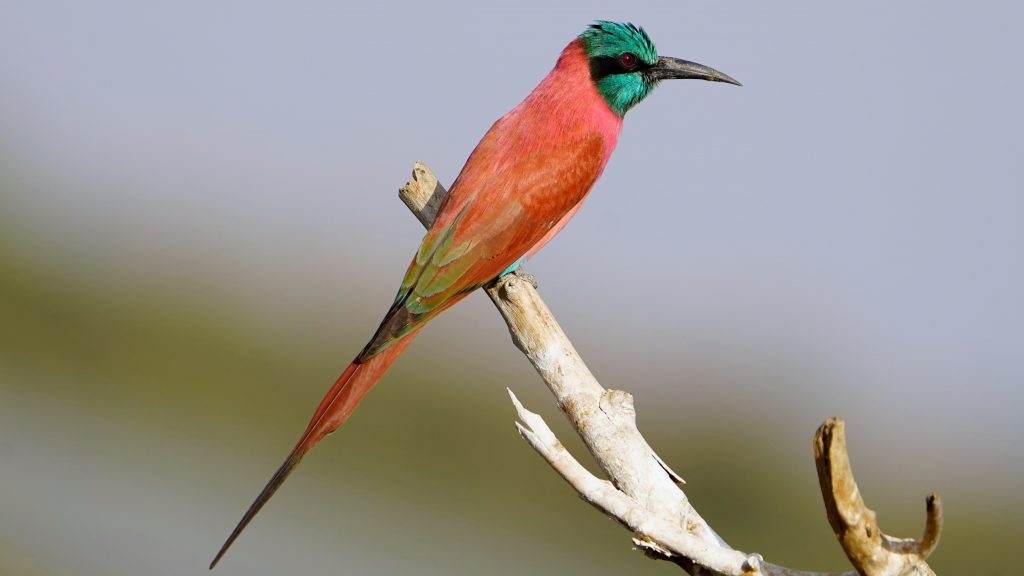Northern Carmine Bee-eater Merops nubicus (Local Name: Warwar)
Description:
approximately 24 centimeters in length, with tail streamers extending up to 36 centimeters. The head is colored metallic green or bluish green, featuring a black strip through the eye. The body is colored carmine-red, while the rump and vent are blue.
Distribution and Status:
Very common and widespread resident and local migrant species in central and southern Sudan. Migrate northward with begin of rainy season and observed in agricultural fields as far north as Khartoum and northeast to Kassala.
Habitat:
Savanna, particularly along riverbanks
Habit:
The Carmine Bee-eater nests in large colony form of hundreds of birds. The nests are holes dug in the banks of rivers or canals, with a diameter of 50 to 80 millimeters and a length that can reach up to two meters. It takes about ten days to dig the nest, and it lines the nest with the remains of insects it feeds on. The female lays four to ten eggs, and the incubation period lasts for 22 days. During the day, both parents take turns incubating the eggs in short periods, not exceeding half an hour each, while at night, the female stays with the eggs, and the male sleeps outside on a nearby tree. Carmine Bee-eaters gather and attack any animal or human approaching their nests until the intruder retreats.
Carmine Bee-eater feed on insects while flying, such as moths, flies, wasps, bees, and locusts. Bees represent the majority of it is food source. It does not get stung by bees and it catches the bee from the middle, rubs its posterior on a stone or tree branch to remove the stinger, and then swallows the bee. Sometimes it flies in front of forest fires to capture insects fleeing from the flames, and it may even ride on the back of a bustards to catch insects stirred by the bird’s movements.




